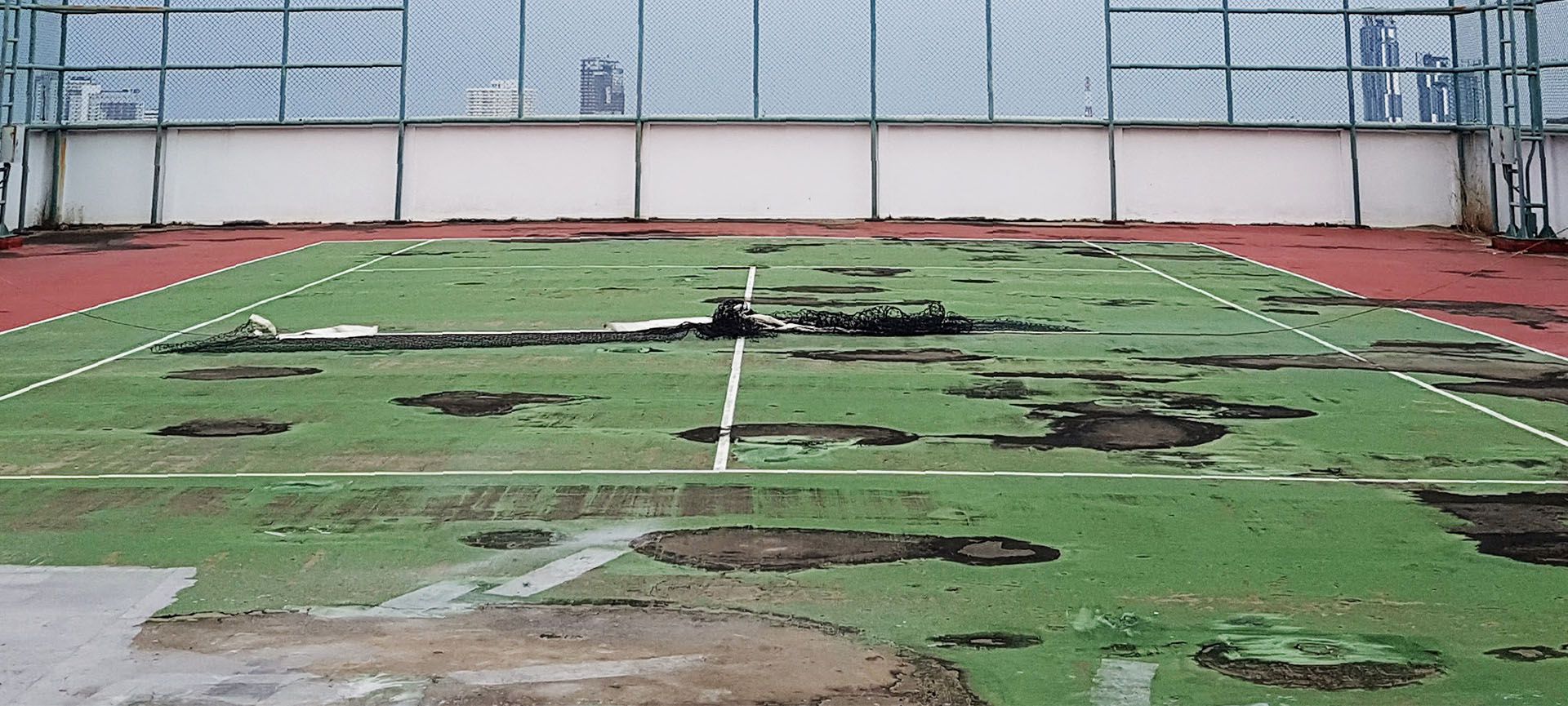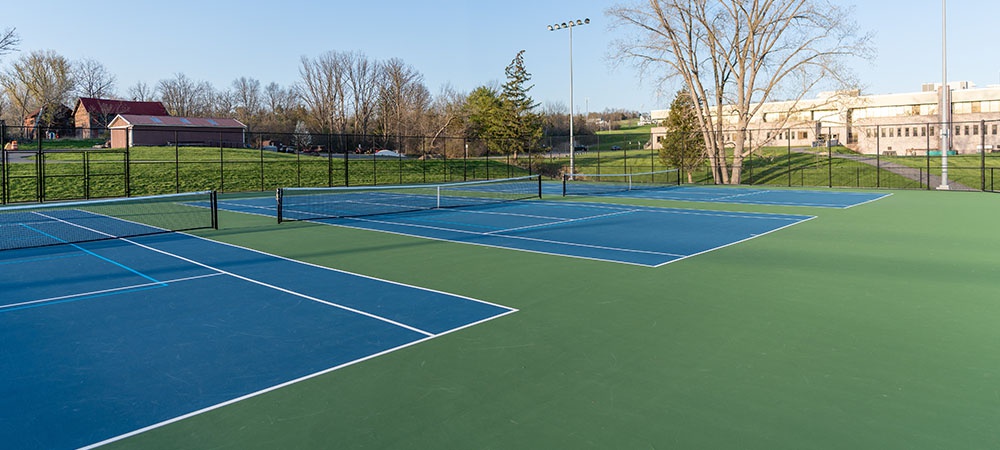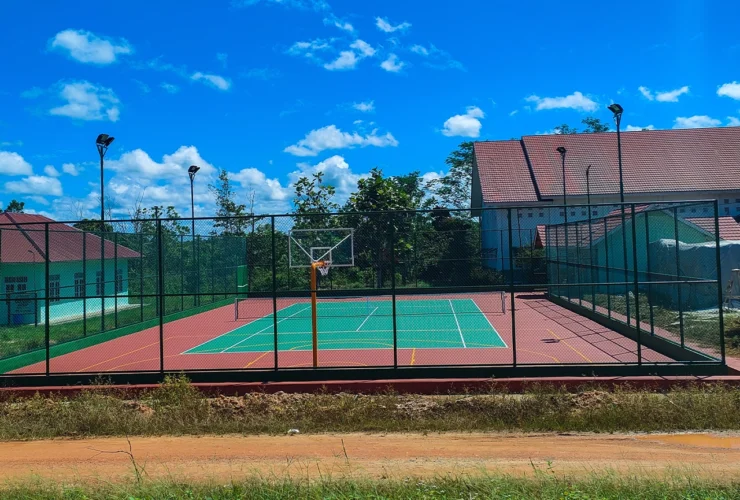Resurface vs. Repair Tennis Court
When your tennis court is starting to show its age, the two options you have for fixing it are resurfacing or repairing. So, which one should you choose? Here’s a look at the pros and cons of each option to help you make a decision.
What Is the Difference between Resurfacing and Repairing?
Resurfacing a tennis court surface means adding a new layer of material on top of the existing base layer. This is typically done every 3-7 years, depending on the conditions of the court and how often it is used.
On the other hand, repairing a tennis court surface means fixing cracks, divots, and other damage that has occurred. Repairs can be done as needed, and do not require resurfacing the entire court.
Both resurfacing and repairing a tennis court surface can help to extend the life of the court and ensure that it remains safe and playable for years to come.
When Should You Resurface Your Tennis Court?
A tennis court is a significant investment, so it’s important to take good care of it in order to prolong its lifespan. Resurfacing is one of the key ways to do this.
How often you need to resurface will depend on a number of factors, such as the material your court is made of, the amount of play it gets, and the climate conditions in your area.
If you start to see cracks or divots forming on the surface, it’s definitely time for a new coat. By resurfacing regularly, you can keep your court looking and playing like new for many years to come.
Pros of resurfacing
- Resurfacing your tennis court can be a great way to improve your game. A fresh surface can provide a faster pace, which can help you to improve your footwork and agility.
- A new court will provide a consistent bounce, leading to improved accuracy and power.
- This will completely correct any problems with the court surface, such as cracks or unevenness.
- It will add aesthetic value to your property compared to repairing
Cons of resurfacing
- This is going to be much more expensive than repairing
- You’ll need to close the courts until the resurfacing work is completed
When Should You Repair Your Tennis Court Surface?
Tennis courts are subject to a lot of wear and tear, and it’s important to keep them in good repair to ensure a safe and enjoyable playing experience.
Depending on the type of surface, repairs may be needed every few months or if you’re lucky, every few years. Cracks, divots, and other damage can make the court uneven and dangerous, so it’s important to fix these problems as soon as they’re noticed.
If left unaddressed, small problems can quickly escalate into larger ones, so it’s always best to err on the side of caution when it comes to repairing your tennis court. You should repair your court if there is very minor damage, or if you don’t have the funds for a full resurfacing.
Pros of repairing
- More enjoyable to play on and a decreased chance of injury with a repaired court
- Significantly cheaper than resurfacing the entire court, especially for minor damage
- The repairs will be quicker than resurfacing, so there will less downtime from the court
Cons of repairing
- You may get an inconsistent bounce from different patches of surface material
- It’s not aesthetically pleasing to have a repaired surface, as it’s usually very noticeable
- It may only be a temporary measure that conceals a bigger problem
How Much Does It Cost To Resurface a Tennis Court?
The cost of resurfacing a tennis court can vary depending on a number of factors, including the size of the court, the type of surface, and the location. The most common type of surface is asphalt but concrete or clay can be used.
Costs can range from anywhere between $3,000 to $10,000 and therefore it’s a good idea to get a quote before weighing up your options.
How Much Does It Cost To Repair A Tennis Court Surface?
The cost of repairing a tennis court can vary depending on the extent of the damage. Minor cracks and divots can be repaired relatively cheaply, while more serious damage may require the replacement of entire sections of the court. It’s likely that you’ll be looking at hundreds of dollars instead of the thousands it costs for resurfacing.
In addition, the type of material the court is made from will also affect repair costs. For example, concrete courts are typically much cheaper to repair than clay or turf courts.
Ultimately, the best way to determine the cost of repairing a tennis court is to consult with a professional who specializes in court maintenance. They will be able to assess the damage and provide an estimate of the repair costs.
Should I Repair Or Resurface My Tennis Court?
If you’re a tennis enthusiast, you know that a well-maintained court is essential for a good game. But when it comes time to do some maintenance on your court, you may be wondering whether you should repair or resurface it.
There are a few things to consider when making this decision. First, assess the condition of your court. If there are only a few cracks or divots, repairs may be all that’s needed. However, if the surface is significantly damaged, resurfacing may be the best option.
Resurfacing will provide you with a new top layer, which can help to protect the court from further damage. It’s also important to think about how often you use the court. If you play frequently, resurfacing may be worth the investment so that you can enjoy a high-quality surface for years to come.
Ultimately, the decision of whether to repair or resurface your tennis court depends on a variety of factors. By taking the time to assess your needs, you can ensure that your court will be ready for action.





